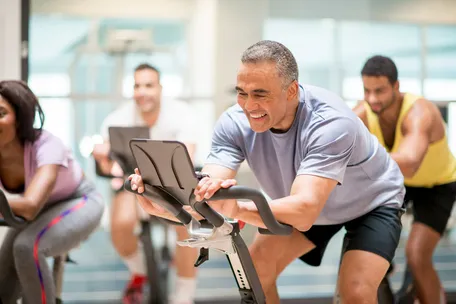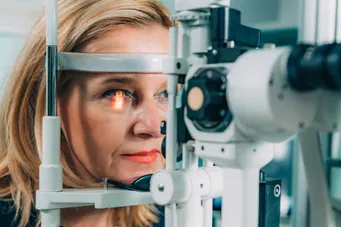By Roger Hare, as told to Kara Mayer Robinson
I was diagnosed with full-blown type 2 diabetes in 2019. My A1c was 12.7 and my fasting glucose was 283. My initial thought was, “Oh my gosh, my world's coming to an end.” But I quickly came to grips with it and put a plan together. With diet, exercise, and medication, I lost 40 pounds. My A1c is now about 6.3.
Exercise plays a big role. I go to the gym two or three times a week for cardio and strength training. I normally start with 15-20 minutes on the treadmill. Then I’ll do some weight lifting and floor exercises. I cool down with another 10-15 minutes on the treadmill.
Testing and Tracking
In the very beginning, I had a meal tracker on my phone that tracked everything I ate. I knew exactly how many carbs I was eating, how much protein, everything. I haven’t been as religious about it lately, just because I’m used to knowing what works for me.
When I want to splurge, I test my blood sugar levels first. If they’re 100 or 102, I'm more apt to eat a little pasta than if it was 125 or 130.
I take 2,000 mg of metformin: 1,000 in the morning and 1,000 at dinnertime. I'm also taking Lipitor for cholesterol, as a preventative for my heart.
My morning routine is pretty simple. I test my blood sugar first thing. I realized if I test it after I brush my teeth, shower, and eat breakfast, my blood sugar levels are too high. Now I always do it first thing
Carb Counting
For breakfast I try to eat some protein, like eggs. If I’m running out the door to go to work and don’t have a chance to cook, I grab a protein bar. I’ve found a couple of good protein bars that I can use as meal replacements.
My rule of thumb is to limit my carbs to less than 35 grams per meal or 15 grams per snack. I try to do low carbs and high protein. When I was first diagnosed, potatoes, bread, and pasta were out of the question. Now I splurge a little bit. If I want to eat pasta, I’ve learned to eat an amount that fits in the palm of my hand.
Continued
At lunch, I usually have a sandwich using a light bread that has 9 grams of carbohydrates per slice instead of 18. I’ll have a little bit of turkey and cheese on it. For a snack, I’ll eat a protein bar or maybe an apple with peanut butter. I may have strawberries or blackberries. At dinner, I'll eat more protein. That may be steak, chicken, or fish -- salmon with broccoli or other vegetables.
I think the biggest thing for me is to not eat anything after 6:30, 7 o'clock. That was a challenge at first. But now, once I eat dinner, I don't snack up. For some people, if their numbers are high, they’ll try to eat some protein right before bed. I haven’t really had that problem.
A Good Support Network
I also attribute my success to surrounding myself with people who are cheerleaders and hold me accountable.
I’m involved with the American Diabetes Association as a healthy eye ambassador. I’ve talked to a lot of people who are struggling. They feel like they’re on an island by themselves. They don't know what to do. They don't have any support network. They don't have a doctor who’s understanding and offers support.
One of the best things I did was make an appointment with an endocrinologist. It’s helpful to have a specialist, not just a family physician, as part of your support team. They can also refer you to nutritionist and other support people.
Finding Motivation
Managing stress is important. I like to spend time with my daughter, which is a stress reliever. We’ve planted a vegetable garden and we spend a lot of time picking vegetables and plants.
My biggest hurdle is making sure I do what I need when I’m alone and nobody's looking. What do I eat? Do I go to the gym and exercise? In the morning, do I go through the drive-through for doughnuts? That’s always been a struggle for me. One of my crutches is iced coffee with a couple of packs of sugar substitute. It’s very difficult for me sometimes to not get a doughnut to go with it when nobody's looking.
To get over those hurdles, I just look at my phone, to a picture of my daughter. I’m 46; if I want to walk her down the aisle, it’s an easy choice.






